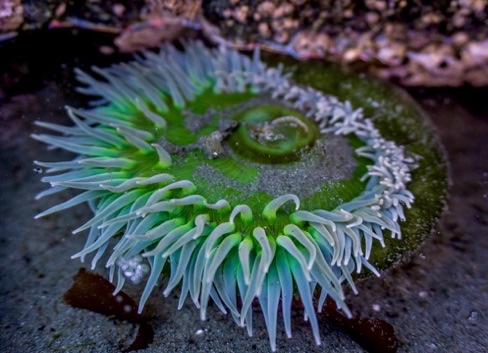The ocean mirrors this process. The surface, like the roof of a house, is the first point of contact where pressures fall. Pollution, heat, and noise amplify each other, and it isn’t long until these layers of stressors compound, balance erodes, and eventually, the very foundation trembles. But just as pressures multiply, so do the responses.
What struck me in Attenborough’s documentary Ocean was the destruction contrasted with recovery. The scene of the bottom trawling left me with tearful eyes and a deep longing for justice. The seafloor lay in ruin, torn and churned as if scraped clean by a giant hand. Creatures scattered in frantic bursts only to vanish beneath the trawler’s nets. Close-ups captured their delicate bodies taking their last breaths before being discarded overboard. And the contrast: a previously overfished area now protected as a marine reserve. Life returned just five years after protection began. What was once an urchin barren transformed into thick, vibrant kelp forests where fish dart, predators return, and the hums of bustling assemblages fill the scene. To me, it is the film’s most powerful message, a living embodiment of resilience and one that offers possibility: given space and protection, the ocean can heal. As Attenborough says, “We don’t need to imagine, we can see for ourselves.”
 The sea is full of life, if you give it time and space
The sea is full of life, if you give it time and space ![]() Image by Shelley P. Russell
Image by Shelley P. Russell
We live in a time saturated with bad news about the ocean. Understanding what is wrong is half the story. Equally important is seeing what is being done and what still needs to be done. Like a lanternfish glowing away in the twilight zone, we too can bring light into the darkness. While the ocean faces immense pressures, we are finding innovative ways to help. Around the globe, projects, communities, and organizations are assembling the scaffolding for recovery. Organizations like Archireef are using 3D printing to create clay reefs that mimic natural coral structures, while scientists at the Woods Hole Oceanographic Institution play the sounds of healthy corals to attract larvae and encourage them to settle on degraded reefs. On the policy front, the World Trade Organization’s new agreement to curb fisheries subsidies marks a global step toward easing pressure on overfished stocks, showing that meaningful change is possible at scale.
If you look for it, the list goes on. Research is pushing boundaries. AI and drones track marine mammals in real time. Autonomous vessels remove marine debris. Microbial bioremediation techniques mitigate the damage of oil spills. Behind the scenes, the often-unnoticed wave makers, from researchers and writers to podcasters, advocates and coordinators, are working from labs and laptops toward a common goal.
Through these efforts, we see that commitment and ingenuity exist. The network is strong, but like a house being rebuilt, it still needs its builders. Progress thrives on collaboration, an element still too rare, and perhaps that is what will carry us forward. As Ryunosuke Satoro wrote:
“Individually, we are one drop. Together, we are an ocean.”
Shelley Pearl Russell



